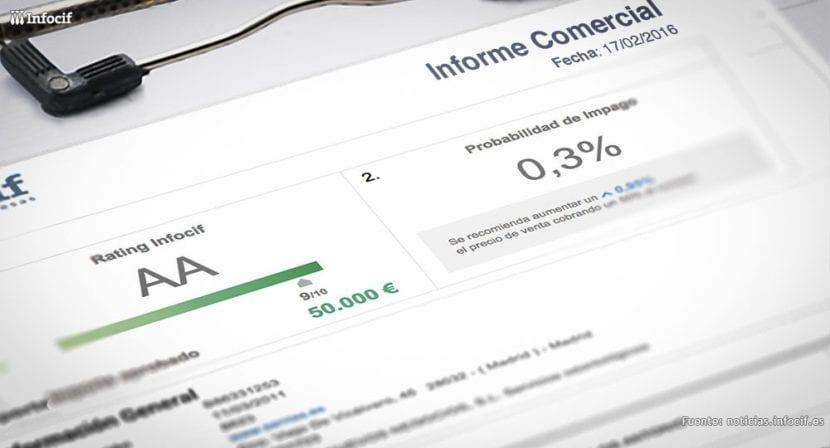
The CIF means Tax identification code and it is an administrative identification element used by companies and organizations to identify the percentages and tax regimes to which each type of company belongs.
Origin of the merchandise and explanation of the nomenclature
To start we must identify and classify the tariff nomenclature of the TARIC system, that is, the customs system used in the European Union.
The tariff heading has the function of indicating the percentage of tariff and VAT that must be applied in each case, as well as the requirements that have to be met, for example, the need to present licenses and other credentials that identify the legal origin of the imported merchandise. .
The tariff heading It is normally provided by the shipper, but we always recommend that importers review the information with their customs broker to avoid any future problems.
The CIF Code consists of 9 alphanumeric digits always following the following structure:
T P P 0 0 0 0 0 C
Where:
- T: It is the Organization type letter, which can be any of these:A, B, C, D, E, F, G, H, J, K, L, M, N, P, Q, R, S, U, V, W.
- P: Provincial code.
- 0: Sequential numbering that corresponds to it within the province.
- C: Check digit, a number or letter
The first digit T It is a letter that indicates the type of company we are working with and can be any of the following:
- A - Public Limited Company.
- B - Limited liability company.
- C - Collective partnership.
- D - Limited partnership.
- E - Community of assets and recumbent inheritances.
- F - Cooperative society.
- G - Associations.
- H - Community of owners under a horizontal property regime.
- J - Civil Companies, with or without legal personality.
- K - Old, deprecated format.
- L - Old, deprecated format.
- M - Old, deprecated format.
- N - Foreign entities.
- P - Local corporation.
- Q - Public body.
- R - Congregations and Religious Institutions.
- S - Bodies of the State Administration and Autonomous Communities.
- U - Temporary unions of companies.
- V - Other types of companies that are not defined in the rest of the keys.
- W - Permanent establishments of non-resident entities in Spain.
The modifications that were introduced can be summarized as follows:

The letter key G, which was assigned to "associations and other undefined type", becomes 4 subcategories.
G: This includes unions, political parties, consumer and user associations, as well as sports federations. They also include non-profit foundations and Savings Banks.
The next part of the key is the provincial identification that consists of the first two digits that are P and the next 5 digits that are 0, in the example of CIF, of which the first two correspond to the identifier of the province in which the organization is located and the next 5 digits are a sequential or correlative numbering in the same province.
- 01 - Álava.
- 02 - Albacete.
- 03, 53, 54 - Alicante.
- 04 - Almeria.
- 05 - Avila.
- 06 - Badajoz.
- 07, 57 - Balearic Islands.
- 08, 58, 59, 60, 61, 62, 63, 64 - Barcelona.
- 09 - Burgos.
- 10 - Cáceres.
- 11, 72 - Cádiz.
- 12 - Castellón.
- 13 - Ciudad Real.
- 14, 56 - Córdoba.
- 15, 70 - A Coruña.
- 16 - Cuenca.
- 17, 55 - Girona.
- 18 - Granada.
- 19 - Guadalajara.
- 20, 71 - Guipúzcoa.
- 21 - Huelva.
- 22 - Huesca.
- 23 - Jaén.
- 24 - Leon.
- 25 - Lleida.
- 26 - La Rioja.
- 27 - Lugo.
- 28, 78, 79, 80, 81, 82, 83, 84, 85 - Madrid.
- 29, 92, 93 - Malaga.
- 30, 73 - Murcia.
- 31 - Navarra.
- 32 - Ourense.
- 33, 74 - Asturias.
- 34 - Palencia.
- 35, 76 - Las Palmas.
- 36, 94 - Pontevedra.
- 37 - Salamanca.
- 38, 75 - Santa Cruz de Tenerife.
- 39 - Cantabria.
- 40 - Segovia.
- 41, 91 - Seville.
- 42 - Soria.
- 43, 77 - Tarragona.
- 44 - Teruel.
- 45 - Toledo.
- 46, 96, 97, 98 - Valencia.
- 47 - Valladolid.
- 48, 95 - Vizcaya.
- 49 - Zamora.
- 50, 99 - Zaragoza.
- 51 - Ceuta.
- 52 - Melilla.
To end with the understanding of a CIF code you have to identify the last digit marked with a C, where you will put a number or a letter as the case may be:
Letter Legal Nature Character to be included in the CIF:
To Stock companies Number
B Limited liability companies Number
C Collective partnerships Number
D Limited partnerships Number
E Communities of assets and recumbent inheritances Number
F Cooperative societies Number
G Associations Number
H Communities of owners Number
J Civil companies, with or without legal personality Number
N Foreign entities Letter
P Local Corporations Letter
Q Public bodies Letter
R Congregations and religious institutions Letter
S Bodies of the State Administration Letter
U Temporary Unions of Companies Number
V Other types not defined in the rest of the keys Number
W Establishments of non-resident entities in Spain Letter
How to calculate the CIF

All merchandise that arrives to the European Union from other parts of the world, must be properly dispatched so that they can enter legally and be officially approved, although there are some exceptions depending on the objective of the import, or rather, the regime that It must be applied according to the various cases that may arise: for example, inward or outward processing, temporary importation, among others.
As a result of this process of legalization of the merchandise, the importer will have to pay taxes: VAT and customs clearance duty. How then are these taxes determined?
Customs value or CIF value of the merchandise
Once we know the origin and destination of the merchandise, then we determine the CIF value of it, to do so we apply the tariff percentage, to obtain the cost of the Import Tariff.
Then, based on these amounts, we can calculate the VAT base, which is made up of the sum of the following concepts:
- Customs value
- Import duty
- Port fees that are identified with the code (T3)
- Discharge and manipulation that is known with the key (THC)
- Since we have the VAT base, we can apply that percentage
- Calculate VAT and Tariff on imports
To make the concept a little clearer, we will show you an example of tax calculation in an import:
CALCULATION OF TAXES ON A CHINA FCL MARITIME IMPORT

Let's suppose a maritime import from China, where the following particular expenses have occurred:
In China:
- 450 USD: freight from the supplier's warehouse to the loading of the container on the ship
- 1000 USD: Sea freight
Expenses in Spain:
- 170 EUR: Unloading and handling
- EUR 50: Port fees
- 200 EUR: Transport from the vessel to the importer's warehouse
- 150 EUR: Rest of expenses such as documentation and paperwork.
Further information:
7.500 USD, value of the merchandise.
Merchandise: denim pants
The customs agent tells us that the tariff heading to be applied is 6103.4200 / 00, which is associated with a 12% duty in the case of coming from China, and a 21% VAT.
You must first convert to EUR, and for this the official change provided by Customs on a monthly basis is applied. For the examples we will take as the exchange price 1 USD is equal to 0,72 EUR.
Let's see the calculation of taxes for an import in FOB conditions, based on the information previously presented:
| Concept | Amount in dollars | Amount Euros |
| Merchandise value | $7.500,00 | 5.400,00 € |
| Freight cost | $1.000,00 | 720,00 € |
| Insurance (3/1000) | $22,50 | 16,20 € |
| Total | 6.136,20 € |
We must apply the corresponding percentage of tariff, depending on the tariff heading and the place of origin of the merchandise:
| Customs value | 6.136,20 € |
| Tariff 12% | 736,34 € |
| Total | 6.872,54 € |
The VAT base is obtained with the sum of several necessary concepts:
| Customs value + Customs value 12% | 6.872,54 € |
| THC | 170,00 € |
| T3 | 50,00 € |
| Total | 7.092,54 € |
And on the basis of VAT, we can then apply the VAT percentage
| VAT base | 7.092,54 € |
| 21% VAT | 1.489,43 € |
It can be said then that the taxes of this import would then be: 736,34 Euros of Tariff, and 1.489,43 Euros of VAT.
If you can appreciate in detail, this procedure is an equation with two unknowns, in which we must be very clear about the original concepts and the information collected based on reading the CIF Code, to correctly calculate the fees that you will have to pay To import any type of merchandise, it will be enough to know its CIF to apply the knowledge that you have read here, try to base yourself on the example and the tables to start practicing, you do not need to be a mathematical expert, that of equations is another way simple to solve but you need to familiarize yourself with the necessary basics first.